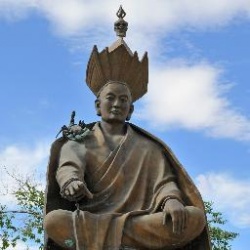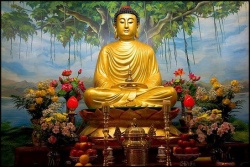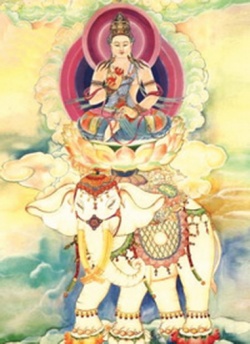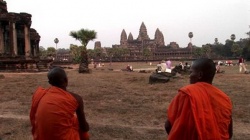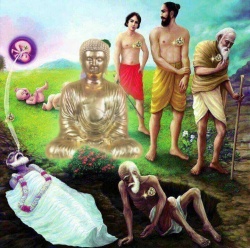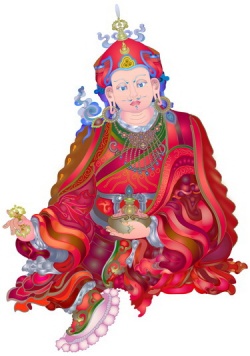Dhammakathika Sutta
Dhammakathika Sutta
Dhamma,kathika Sutta
The Discourse on the Dharma Speaker
Theme: The 4 kinds of Dharma speakers
Translated & annotated by Piya Tan ©2014
1 Grammatical analysis
1.1 THE DHAMMA,KATHIKA SUTTA is found in the Aṅguttara Nikāya (A 4.139) as well as in the
Puggala Paññatti (Pug 4.7), the fourth book of the Abhidhamma Piṭaka. It is a short text listing 4 kinds
of Dharma speakers. Besides this translation, at least three others are available, but they have all been
differently translated.1
1.2 PALI TEXT. Since the Pali text of the Sutta is rather short, and it helps to be familiar with its key
terms, it is here reproduced in full, based on the Burmese version:
1 Cattāro’me bhikkhave dhamma,kathikā. Katame cattāro?
2 Idha bhikkhave ekacco dhamma,kathiko
appañ ca bhāsati asahitañ ca,
parisā c’assa na kusalā hoti sahitâsahitassa.
Eva,rūpo bhikkhave dhamma,kathiko eva,rūpāya parisāya dhamma,kathiko tv-eva saṅkhaṁ gacchati.
3 Idha pana bhikkhave ekacco dhamma,kathiko
appañ ca bhāsati sahitañ ca,
parisā c’assa kusalā hoti sahitā,sahitassa.
Eva,rūpo bhikkhave dhamma,kathiko eva,rūpāya parisāya dhamma,kathiko tv-eva saṅkhaṁ gacchati.
4 Idha pana bhikkhave ekacco dhamma,kathiko
bahuñ ca bhāsati asahitañ ca,
parisā c’assa na kusalā hoti sahitâsahitassa.
Eva,rūpo bhikkhave dhamma,kathiko eva,rūpāya parisāya dhamma,kathiko tv-eva saṅkhaṁ gacchati.
5 Idha pana bhikkhave ekacco dhamma,kathiko
bahuñ ca bhāsati sahitañ ca,
parisā c’assa kusalā hoti sahitâsahitassa.
Eva,rūpo bhikkhave dhamma,kathiko eva,rūpāya parisāya dhamma,kathiko tv-eva saṅkhaṁ gacchati.
6 Ime kho bhikkhave cattāro dhamma,kathikā’ti.
1.3 COMMENTARIES. The Aṅguttara Commentary on the Sutta is only 19 words in 4 short sentences
(AA 3:133). The Puggala Paññatti Commentary gives a longer explanation, but only in 10 lines (PugA
224). The Commentary here glosses sahita (“with benefit, beneficial”) as attha,yutta (“yoked with benefit”).
Bodhi translates attha as “meaning” (one of its several senses), but which clearly does not apply
here. Woodward renders it as “to the point,” which is too narrow. And Law renders it broadly as “relevant.”
1.4 THE REFRAIN. All the translator seems to have missed the sense of eva,rūpāya parisāya dhamma,
kathiko tv-eva saṅkhaṁ gacchati in the refrain [§§2.2 = 3.2 = 4.2 = 5.2], where eva,rūpāya parisāya
has a dative or genitive structure.
Tv-eva = tu eva [id] where tu is an enclitic particle meaning “however, but, rather,” sometimes merely
an expletive; eva is an emphatic particle, meaning “only, just”). Hence, the phrase should here be translated
as “regarded as a Dharma speaker only for such a congregation.”
2 Sutta commentary
2.1 GURUS. The Sutta is not about 4 kinds of Dharma speakers in general, but specifically refers to
those who are only as good as how their respective audience respond to their teaching. Hence, we have
1 B C Law, Pug:L 1924:59; F L Woodward, Pug:W 1933:141; Bhikkhu Bodhi, A:B 2012:518.
10
A 4.3.4.9 Aṅguttara Nikāya 4, Tika Nipāta 3, Tatiya Paṇṇāsaka 4, Puggala Vagga 9
the refrain: “Bhikshus, such a Dharma speaker is regarded as a Dharma speaker only for such a
congregation” (eva,rūpo bhikkhave dhamma,kathiko eva,rūpāya parisāya dhamma,kathiko tv-eva saṅ-
khaṁ gacchati). [1.4].
Hence, we can rightly say that this Sutta is about 4 kinds of sectarian or cult gurus who may give
short or long talks to their congregations which may or may not benefit them. Such “teachers” are only so
in terms of their congregation: the crowd defines them, and they define the crowd. This is a very private
view on Buddhism that we should avoid.
2.2 RELATED SUTTAS. The Dhamma,kathika Sutta should be studied with the (Dhamma,desaka)
Udāyī Sutta (A 5.159), which also deals with a cultish or self-centred guru, but where the Buddha gives a
list of qualities of a Dharma speaker. The Introduction to the Sutta translation has a section on “The dynamics
of teaching Dharma,” which also gives a list of related suttas. (SD 46.1 (3))
— — —
The Discourse on the Dharma Speaker
A 4.139 = Pug 4.7
1 Bhikshus, there are these 4 kinds of Dharma speakers. What are the four?
2 Here, bhikshus, a certain Dharma speaker
says little, but what is unbeneficial, and
so that his congregation is unskilled in what is beneficial and what is not.2
2.2 Bhikshus, such a Dharma speaker is regarded as a Dharma speaker only for such a congregation
[an assembly].3
3 But here, bhikshus, a certain Dharma speaker
says little, but what is beneficial, and
so that his congregation is skilled in what is beneficial and what is not.
3.2 Bhikshus, such a Dharma speaker is regarded as a Dharma speaker only for such a congregation.
4 But here, bhikshus, a certain Dharma speaker
says much, but what is unbeneficial, and
so that his congregation is unskilled in what is beneficial and what is not.
4.2 Bhikshus, such a Dharma speaker is regarded as a Dharma speaker only for such a congregation.
5 But here, bhikshus, a certain Dharma speaker
says much, but what is beneficial, and
so that his congregation is skilled in what is beneficial and what is not.
5.2 Bhikshus, such a Dharma speaker is regarded as a Dharma speaker only for such a congregation.
6 These, bhikshus, are the 4 kinds of Dharma speakers.
2 Idha pana bhikkhave ekacco dhamma,kathiko appañ ca bhāsati asahitañ ca, parisā ca na kusalā hoti sahitâsahitassa.
Alt tr: “Bhikshus, such a Dharma speaker is regarded as a Dharma speaker who is just like his assembly.”
3 Eva,rūpo bhikkhave dhamma,kathiko eva,rūpāya parisāya dhamma,kathiko tv-eva saṅkhaṁ gacchati. On tv-eva,
see (1.4).
